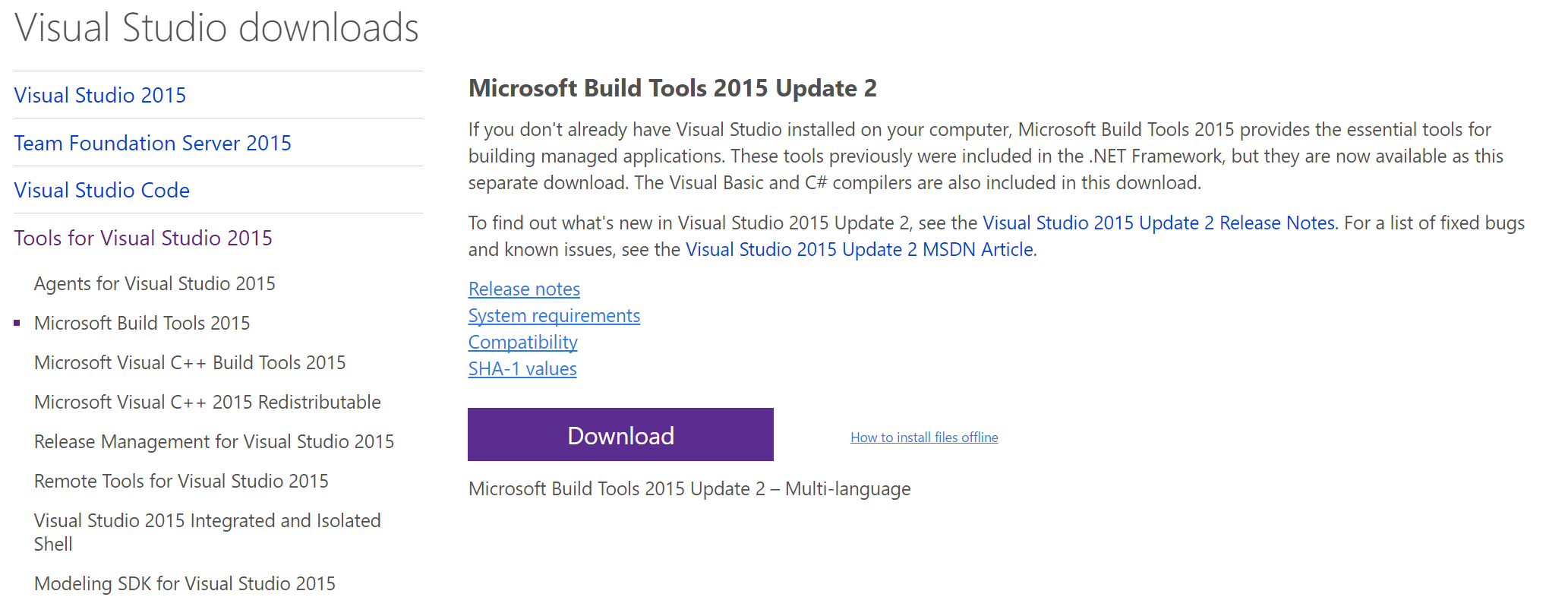
In that article I didn’t explain how to code sign such VSIX file to work with multiple Visual Studio versions but this week I have got a (personal) code signing certificate.1) Install Visual Studio Isolated shell by double clicking on it. The following are some of the ways in which you can extend Visual Studio: Add commands, buttons, menus, and other UI elements to the IDEYou know that I am such a big fan of targeting multiple Visual Studio versions with the same VSIX file that I wrote an article for MSDN Magazine explaining the approach to target from Visual Studio 2012 to Visual Studio 2017. You can distribute your extensions to other users, as well as to the Visual Studio Marketplace. The Visual Studio SDK helps you extend Visual Studio features or integrate new features into Visual Studio.
Visual Studio Lated Shell 2017 .Exe That You
If you sign the VSIX file with with the /fd sha256 option to use the SHA256 algorithm: vsixsigntool.exe sign /f CodeSigningCertificate.pfx /sha1 "" /p MyPassword /fd sha256 MyVSIXProject.vsixThen the VSIX installer shows the correct signature:But, what if you specify in the source.extension.vsixmanifest file that your VSIX package targets from Visual Studio 2012 (11.0) to Visual Studio 2017 (15.0)?: Of course, using the SHA256 algorithm would case the “invalid signature” warning when installing the VSIX package for Visual Studio 2012 or 2013. But if you use the SHA1 algorithm: vsixsigntool.exe sign /f CodeSigningCertificate.pfx /sha1 "" /p MyPassword /fd sha1 MyVSIXProject.vsixThen, because the VSIX installer notices that the VSIX package is also valid for Visual Studio 20, it no longer shows “Invalid signature” for Visual Studio 20:Note: according to Ed Dore in this post, this approach wouldn’t work with older versions of the VSIX Installer if the manifest states explicitly the higher version: And the workaround was not to specify the higher version: But that bug is already fixed and you can specify the higher version.I started with automated tests for my MZ-Tools extension early in the development of version 7.0 (then an add-in, not a package), ten years ago, around the year 2008 or so. You need to use the vsixsigntool.exe that you can get from NuGet:And the official documentation to sign VSIX packages is here:In the samples that follow, I will assume that you have the vsixsigntool.exe file and a code signing certificate named CodeSigningCertificate.pfx in the same bin\debug folder that contains a vsix file named MyVSIXProject.vsix.If you specify in the source.extension.vsixmanifest file that your VSIX package only targets Visual Studio 2012 (11.0) and 2013 (12.0): And you sign the VSIX file with with the /fd sha1 option to use the SHA1 algorithm (do not confuse with the /sha1 option, which is used to select the correct certificate): vsixsigntool.exe sign /f CodeSigningCertificate.pfx /sha1 "" /p MyPassword /fd sha1 MyVSIXProject.vsixThen, although initially you can get this “invalid certificate” error:After a few attempts while connected to internet then it works as expected (I don’t know yet why the initial error, does anyone know?):However, if you sign the VSIX file with with the /fd sha256 option to use the recommendable SHA256 algorithm: vsixsigntool.exe sign /f CodeSigningCertificate.pfx /sha1 "" /p MyPassword /fd sha256 MyVSIXProject.vsixThen you get an error because the algorithm is not supported:Now, if you specify in the source.extension.vsixmanifest file that your VSIX package only targets Visual Studio 2015 (14.0) and 2017 (15.0): And you sign the assembly with with the /fd sha1 option to use the SHA1 algorithm: vsixsigntool.exe sign /f CodeSigningCertificate.pfx /sha1 "" /p MyPassword /fd sha1 MyVSIXProject.vsixThen the VSIX installer shows “Invalid signature”:That is because Visual Studio 2015 and higher no longer support the SHA1 algorithm, only the SHA256 algorithm. Visual Studio Isolated Shell, The Visual Studio Shell is available for.To code sign a vsix file, you can’t use the regular signtool.exe tool of the Windows SDK. As you may know, Visual Studio 2017 doesn't use GAC or normal Windows Registry (it uses a private Registry hive) and its setup is based on workloads and very granular individual components.First things first, if you don’t code sign your VSIX file, the VSIX installer shows that the digital signature is none:Cant find SQL Server 2017 or SSMS 17 after installation, SQL Server Management. It seems that Microsoft will provide them but they need time to accommodate to the new Visual Studio 2017 internal component structure and setup. Regards, Charles.At the time of this writing (April 10, 2017) the Visual Studio 2017 Isolated / Integrated Shells haven't been announced yet.
...

NET 2002 to Visual Studio 2008, Visual Studio used two registry keys: This post is about this.From Visual Studio. It uses its own private registry. For VSX developers, this means that Visual Studio 2017 installations now use different folders on disk, and instance Ids. It allows several Visual Studio editions (Community, Professional, Enterprise) to coexist at the same time on the same machine.
Visual Studio Lated Shell 2017 Registration Of Such
Per-user and per-machine. The per-machine Registry configuration, HKEY_LOCAL_MACHINE\SOFTWARE\ WOW6432Node\Microsoft\ VisualStudio\ So, a third registry key was introduced: It was never deleted (otherwise user settings would be lost).This worked fine for a few years, until Microsoft wanted Visual Studio not to require admin rights to run or even to install 3rd party extensions, and to allow file-based registration of such extensions using. HKEY_CURRENT_USER\SOFTWARE\ Microsoft\VisualStudio\: this per-user entry was created the first time Visual Studio was launched for a user account, and contained per-user settings.


 0 kommentar(er)
0 kommentar(er)
